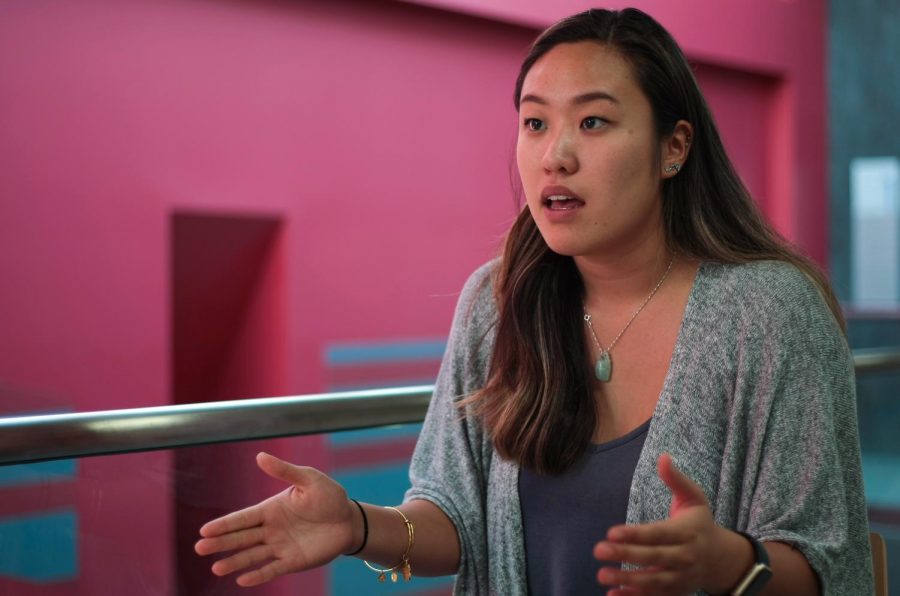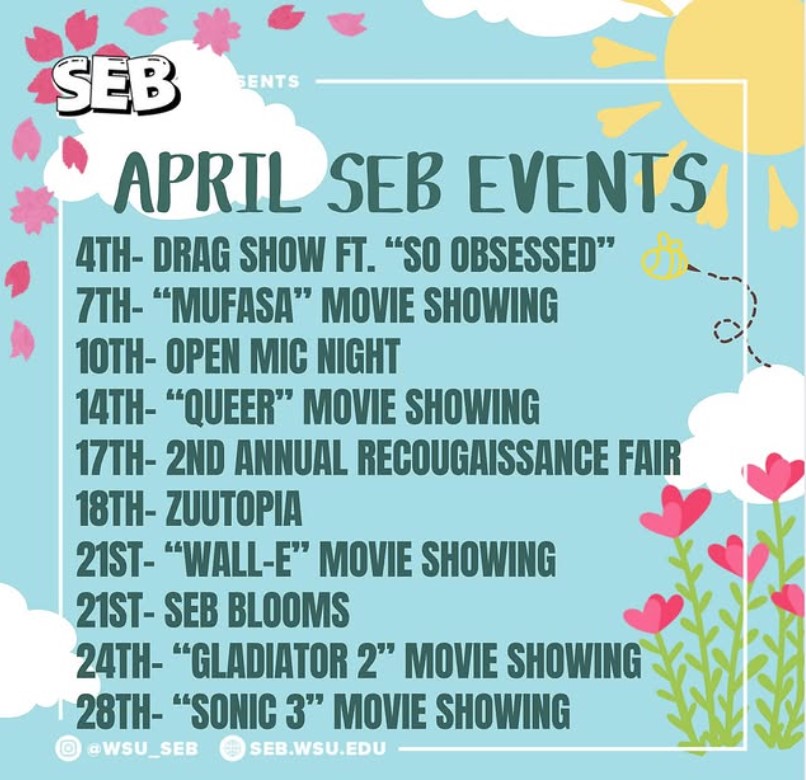Finding love for conservation
Research in South Dakota spurred one student’s interest in ecology
BEN SCHUH | THE DAILY EVERGREEN
Annie Fan, a fifth-year senior studying wildlife ecology and conservation science, talks about her summer spent working for Pheonix Conservency Wednesday at The Chinook.
September 7, 2018
Annie Fan, a senior at WSU, only realized she wanted to major in wildlife ecology and conservation last summer after a fellowship at the San Diego Zoo. One year later, she’s doing environmental field research for a local nonprofit.
As an intern at the Phoenix Conservancy, which focuses on conservation and maximizing biodiversity, Fan said she worked with the nonprofit to collect data on critically endangered ecosystems.
“I think [environmental conservation], as a whole is more or less what I’m trying to do too, so working with them was probably the best thing that happened to me that semester,” she said.
From July 14 to July 28, Fan went with the Phoenix Conservancy to South Dakota and Wyoming to work on restoration with the Forest Service in the Sand Creek of the Black Hills.
The work required them to camp on-site, an experience Fan had never had before.
“My first time camping, having it be in the Black Hills with Phoenix, doing the work that we were doing, was surreal,” Fan said. “I had a lot of first experiences in the Black Hills. Camping was one of them. I saw my first firefly, my first shooting star.”
During her first week, she removed hawthorn and buckthorn, invasive species that were killing other plants around the area.
Throughout her time there, she said she was impressed by the passion of the individuals she worked with.
“The best part of the whole trip,” she said, “was working with people who had very different views and perspectives on not only what they were doing, but in life as a whole.”
Fan’s work included helping to build a buck and rail fence that protects 30 acres of wetland that had previously been “destroyed” by wildlife and cattle trampling it. Conservationists hope the fence will allow beavers to come and restore the wetland.
She also helped conduct a goshawk survey by holding a boombox playing the bird’s cry.
To determine where goshawks live, Fan would play the recording and wait for 10 minutes to see if any of the birds flew by. The Forest Service uses this data to protect goshawk habitat from logging.
In the swamps, Fan helped record data about bats and set up netting to find a breeding pair.
“I got to stand behind them and say, okay, I see a knobby joint, so that’s a juvie,” Fan said. She recorded that information, too.
After the trip, Fan said she was surprised at how much she learned in just two weeks.
“Nature isn’t somewhere that you have to go and see. You are in it,” she said. “The more aware you are about your surroundings, the more you realize how biodiverse everything is around you.”
Fan said she was blown away by her experience in South Dakota.
Next summer, she plans to go to Madagascar with the Phoenix Conservancy to aid conservation efforts for ring-tailed lemurs by placing fire deterrents in the Crystal Forest, where arson-related poaching occurs.
While she is excited to work with the lemurs and the locals on her next trip, Fan said she will always remember this summer.
“The whole experience of working with new people, learning about them and seeing firsthand immediately the good work that we did was the best part,” she said. “That’s something I’ll never forget.”










